Aspects aligning for nation’s chip industry
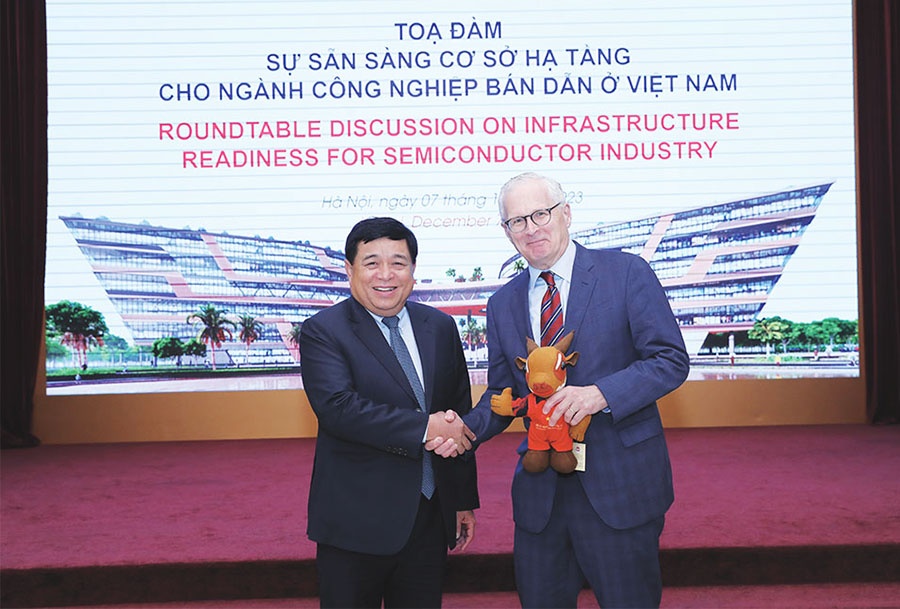 |
At last week’s roundtable discussion on infrastructure readiness for the semiconductor industry at the headquarters of the Ministry of Planning and Investment (MPI), representatives of the US Semiconductor Industry Association (SIA) confirmed that the outlook for the semiconductor industry remains bright.
A new World Semiconductor Trade Statistics industry forecast from a fortnight ago projected annual global sales of the industry to increase by 13 per cent in 2024, reaching $588 billion.
SIA members see incredible opportunities for Vietnam to grow its footprint in global semiconductor supply chains, and they announced new investment and expansion in the Vietnam’s promising market.
A couple of months ago, Amkor’s new facility in the northern province of Bac Ninh was inaugurated. In May, Marvell announced that it would set up the world’s largest design and research and development (R&D) centre in Ho Chi Minh City – which will be one of Marvell’s four largest R&D centres, alongside those in the US, India, and Israel.
Intel, in Vietnam since 2006, has made over $1.5 billion in investments and is starting the second phase of expanding its assembly and test manufacturing operations. Intel Products Vietnam is its largest such facility, accounting for over 70 per cent of all Intel assembly and test volumes, creating more than 7,000 jobs.
“These investments are a testament to Vietnam’s pivotal and growing role in the global semiconductor supply chain,” said SIA chairman John Neuffer. “As Vietnam continues to advance, it will be important to play to the country’s strengths to draw in greater semiconductor investments. That means, for starters, doubling down to entice more back-end assembly testing.”
Harry Clapsis, head of Government Affairs at Ampere Computing, highlighted the role of Vietnam in the development of the semiconductor industry. “Ampere Computing Vietnam plays an important role in manufacturing a chip product. Over the last five years, we have hired about 200 employees in Vietnam, and the expansion will be maintained in the time coming under the supportive policies of the government here.”
Meanwhile, Synopsys has 600 employees in Vietnam after seven years of establishment. In September, it signed MoUs with the Vietnam National Innovation Centre and others in a bid to bolster the semiconductor workforce, and establish a Vietnam semiconductor research institute.
The collaborations will cultivate an advanced integrated circuit design workforce and facilitate the startup design community in Vietnam, as well as set up an initial R&D lab and a high-end emulation centre to cultivate related design startups and facilitate R&D production capability.
Stewart Barber, head of Government Affairs of Synopsys said, “The support of Vietnam’s government, especially the MPI, is very useful for us, and for the boom of the semiconductor industry here.”
Meanwhile, Marvell Technology established two offices in Ho Chi Minh City with 300 employees, and is looking to open its third office in the central city of Danang in 2024, while Infineon Technologies Vietnam has just opened up its first office in Vietnam this year. Both companies have asserted commitment through collaboration with universities and institutes, under the assistance of the government, in training human resources.
Nguyen Van Phuc, Deputy Minister of Education and Training, confirmed that Vietnam has very abundant human resources, and the number of students studying STEM subjects has increased by 10 per cent over the past three years.
“Vietnam has strengths in training mathematics and chemistry compared to elsewhere in Southeast Asia, which is a good foundation for semiconductors and IT,” Phuc said.
Currently, about 200,000 Vietnamese students are studying abroad, while the nation has around 40 universities providing training in fields related to semiconductors.
“If the demand on human resources for the semiconductor industry increases, students will pay more attention to this industry, and Vietnam can fully meet needs that includes additional and new training,” the deputy minister said. “We would like to invite US businesses to cooperate closely with universities, build training programmes and laboratories, and receive internships in this industry.”
Declaring readiness of local infrastructure, Vuong Quoc Tuan, Vice Chairman of Bac Ninh People’s Committee, said that this is the opportunity to seize and welcome new foreign investment.
“In the semiconductor industry, Bac Ninh province boasts the largest area for industrial parks in the north to become a centre for innovative research and transfer. We support half of tuition fees for students in the high-tech field,” Tuan said.
Heads of management boards at high-tech parks in both Ho Chi Minh City and Hanoi have highlighted the synchronous ecosystem for the semiconductor industry. While the Hoa Lac complex in the capital has gathered numerous tech giants like FPT, Viettel, MobiFone, and Vinaphone as well as top universities, Saigon High-Tech Park has built a training centre for the industry.
To make further breakthroughs for the industry, the MPI has asked US businesses to support Vietnam in accessing and implementing projects within the framework of the US government grant fund for smaller companies in the semiconductor supply chain, worth $500 million, as well as cooperate with local businesses to develop a semiconductor industry ecosystem in Vietnam, and build more chip factories here based on the readiness of infrastructure and human resources.
| Nguyen Chi Dung - Minister of Planning and Investment
The joint statement on upgrading Vietnam-US relations to a comprehensive strategic partnership has asserted Vietnam’s great potential to become a hub of the semiconductor industry, both countries will actively coordinate to enhance Vietnam’s position in the global semiconductor supply chain. Vietnam has actively prepared conditions to be ready to receive and cooperate with US businesses and investors in the semiconductor industry supply chain. The nation has gradually improved the system of policies and laws on investment and businesses to create the most new advantages for business investment procedures. We continue to enhance the one-stop shop to handle procedures for investors through the management boards of high-tech parks and economic zones in localities. The ministry is building a human resource development project for the semiconductor industry to train 50,000 engineers by 2030, and meet human resource needs for semiconductor businesses investing in the country. Vietnam has established the National Innovation Centre, along with three high-tech parks in Ho Chi Minh City, Hoa Lac, and Danang to receive investment and R&D projects in the semiconductor industry with highly preferential policies. The government also approved Power Development Planning VIII and established the State Steering Committee for key projects in the energy sector to provide stable and sustainable electricity. This is especially so for projects in high technology and semiconductors, preparing enough clean premises in high-tech parks, as well as accelerating the progress of major transportation projects connecting to seaports and airports. The National Assembly, in addition, has issued a resolution allowing the government to establish an investment support fund for high-tech projects, including those in the semiconductor industry, which is expected to be issued in mid-2024. John Neuffer-Chairman Semiconductor Industry Association
The semiconductor industry is undeniably one of the most critical industries in today’s technology-driven world. It serves as the backbone for innovation and progress across various sectors, including telecommunications, automotive, healthcare, education, and more. The demand for advanced semiconductor technologies is constantly rising, and both nations must work together to seize the opportunities it presents. There are a couple of key ingredients to a successful semiconductor strategy. Firstly, the workforce is extremely important for our industry. Vietnam has an abundance of young, incredibly hard-working talent, and much of that is STEM talent. Our entire industry is experiencing a talent shortage across the globe. With that, Vietnam’s plan to produce 50,000-100,000 more chip engineers is the right objective and I hope that it can be achieved as soon as possible. Competing on talent is a smart move. We need the whole pipeline of talent to research, design, and manufacture chips. Secondly, for the US chip industry, from every $5 in sales, we put $1 back into R&D, making us one of the most R&D-intensive industries in the world. So, another key ingredient for a successful strategy is to offer competitive incentives to attract R&D investment in our sector. The newly established National Innovation Centre is a great start for Vietnam. Thirdly, we encourage the Vietnamese government to make clear in the strategy and the following implementation measures that the incentives and support your government offers will be available to companies of all sizes globally that want to invest in Vietnam. Additionally, to significantly expand the scale of manufacturing, continuing to improve infrastructure is also critical. That includes further developing and promoting industrial parks, logistics hubs, and transportation networks. Setting up a one-stop shop to coordinate all administrative and regulatory-related issues for semiconductor investments could be the way to go. Finally, a good strategy needs a forward-looking trade policy. Even with the supply chain rebalancing that is happening now, the semiconductor industry will continue to be global, including “zero-in, zero-out” tariff treatment and streamlined processes at the border. |
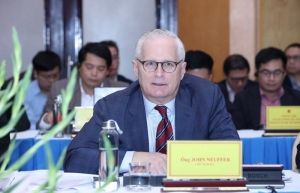 | US semiconductor firms double down on investments in Vietnam Vietnam's growing significance in the global semiconductor supply chain was the focus of a recent seminar in Hanoi, led by the US Semiconductor Industry Association (SIA). The event, organised by Vietnam's Ministry of Planning and Investment on December 7, underscored the nation's expanding influence in the high-tech sector. |
 | Nvidia announces move into Vietnam Nvidia, one of the world’s top chip manufacturers, is looking to establish a significant presence in Vietnam with a $250 million investment in the country. |
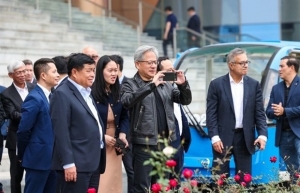 | Vietnam rolls out red carpet for US chip giant’s investment Vietnam boasts huge potential to develop semiconductor and AI industries, and pledges to create favourable conditions for NVIDIA corporation, a leading chip producer in the US, Minister of Planning and Investment Nguyen Chi Dung said on December 11. |
What the stars mean:
★ Poor ★ ★ Promising ★★★ Good ★★★★ Very good ★★★★★ Exceptional
Related Contents
Latest News
More News
- Global partnerships key to Vietnam’s IFC development (December 26, 2025 | 16:18)
- Vingroup pulls out of bid to invest in North-South high-speed railway (December 26, 2025 | 11:42)
- Strengthening supply chains through trade promotions and customs reform (December 24, 2025 | 14:00)
- PM orders investment model for North–South high-speed rail (December 22, 2025 | 17:43)
- LS Eco Energy to invest in Vietnam rare earth sector (December 22, 2025 | 17:31)
- Government moves to establish International Financial Centre (December 21, 2025 | 21:00)
- Vietnam's IFC to target global investment flows (December 21, 2025 | 18:00)
- Two national hospitals expand capacity with new facilities (December 20, 2025 | 09:00)
- Ha Tinh breaks ground on major Vingroup industrial and energy projects (December 19, 2025 | 18:24)
- EVN launches major power infrastructure projects nationwide (December 19, 2025 | 18:17)

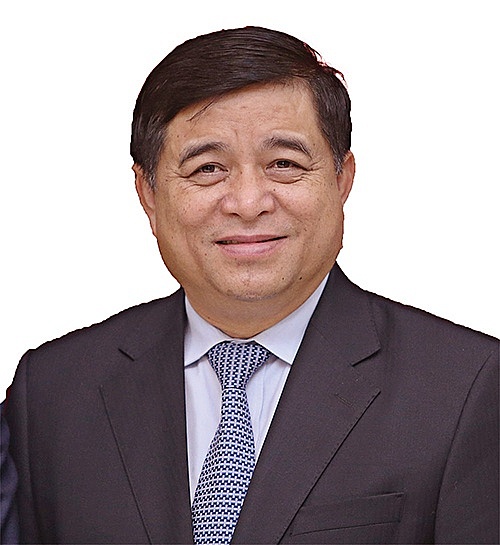
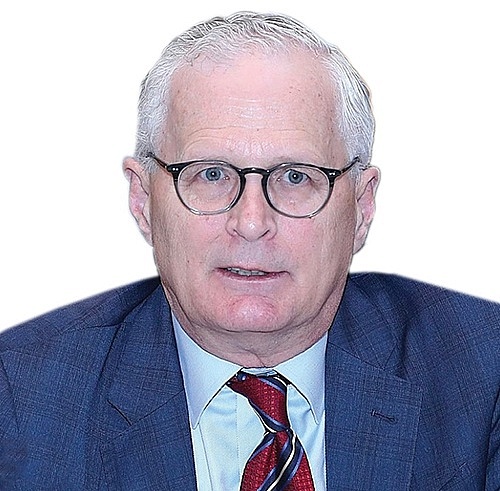
 Tag:
Tag:




















 Mobile Version
Mobile Version